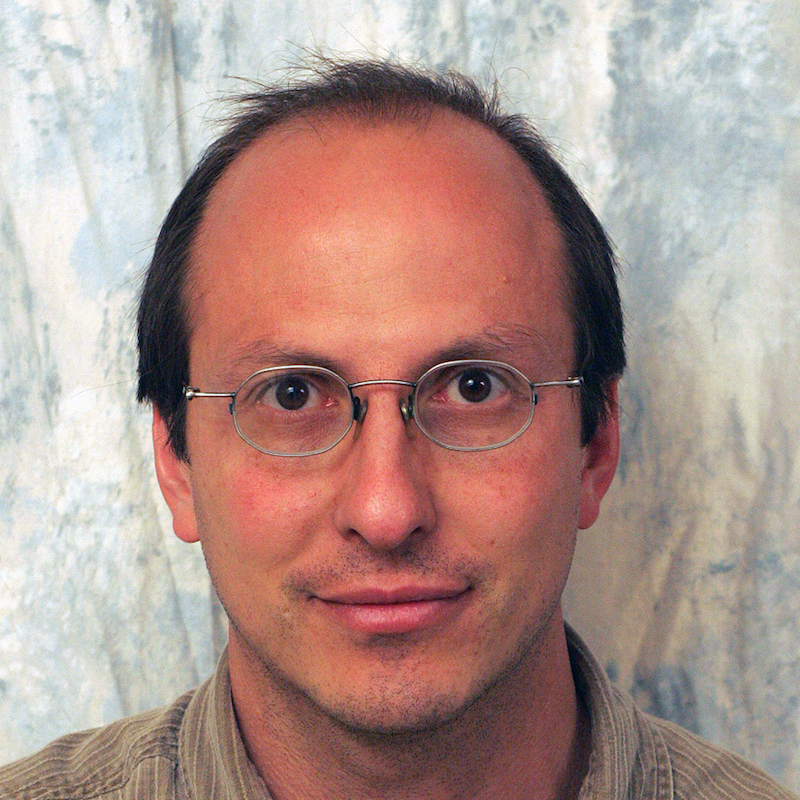
Illah Nourbakhsh
Kavcic-Moura Professor of Robotics, Robotics Institute
Executive Director, Center for Shared Prosperity
Director, CREATE Lab
Bio
Illah R. Nourbakhsh is Kavcic-Moura Professor of Robotics, Executive Director of the Center for Shared Prosperity, founded in 2021, and co-director of the Community Robotics, Education and Technology (CREATE Lab). His current research projects explore community-based robotics, including educational and social robotics and ways to use robotic technology to empower individuals and communities. Illah earned his bachelor's, master's and PhD in computer science at Stanford University and has been a faculty member of Carnegie Mellon since 1997.
The CREATE Lab's researchers lead diverse projects, from the application of GigaPan technology to scientific, citizen science and educational endeavours internationally to Hear Me, a project that uses technology to empower students to become leads in advocating for meaningful social change; Arts and Bots, a program for creative art and robotics fusion in middle school; Message from Me, a new system of communication between pre-K children and their parents to improve home-school consistency; Explorables, interactive visualization tools that empower communities of practice to make sense of data and communicate to broad audiences, to many other programs. The CREATE Lab's programs have already engaged more than 40,000 people globally, and the CREATE Satellite program is forging additional CREATE lab partners in new geographic zones.
While on leave from Carnegie Mellon in 2004, he served as Robotics Group lead at NASA/Ames Research Center during the MER landings. He was a founder and chief scientist of Blue Pumpkin Software, Inc., which was acquired by Witness Systems, Inc. In 2009, the National Academy of Sciences named him a Kavli Fellow. In 2013 he was inducted into the June Harless West Virginia Hall of Fame. He was previously head of the CMU Robotics Masters program, and was Associate Director of Robotics as Faculty Director. He is co-author of the second edition MIT Press textbook, Introduction to Autonomous Mobile Robots. He is author of the MIT Press book for general readership, Robot Futures. He published Parenting for Technology Futures, as an Amazon paperback. He is co-author of the MIT Press textbook, AI and Humanity. He is a trustee of the Claude Worthington Benedum Foundation, a trustee of Winchester Thurston School, and Chairman of the Board of Directors of the Southwestern Pennsylvania Environmental Health Project. He is also Chairman of Airviz, Inc., a company dedicated to empowering individuals regarding home air quality. He is a World Economic Forum Global Steward, a member of the Global Future Council on the Future of AI and Robotics, and the IEEE Global Initiative for the Ethical Considerations in the Design of Autonomous Systems, the Global Innovation Council of the Varkey Foundation and Senior Advisor to The Future Society, Harvard Kennedy School. He is also on the Board of Director of Open Planet, a London-based Community Interest Corporation.
Research
For more than ten years Nourbakhsh has been exploring human-robot interaction with the aim of creating rich, effective and satisfying interactions between humans and robots. His research has focused specifically on human-robot collaboration, wherein the robotic and human agents in the system share the same unifying goal or utility function. He further sharpens his scope to human-robot collaboration for learning, in which the measurable outcomes are information gain on the part of the humans in the system. In the context of his focus on collaboration for learning, rich means a cognitively sophisticated interaction in which humans and robots communicate as peers; effective means that formal measures of human learning should yield significant outcomes; satisfying means that humans should find the interaction both useful and pleasurable.
Three key questions govern his inquiry into human-robot collaboration:
- What enabling competencies in the areas of social perception and control are required for applicability of the resulting models?
- What principles of robot morphology and robot behavior design have broad applicability to the design of interaction systems?
- Can a principled interaction evaluation methodology enable us to implement complete, feedback-driven design life cycles for interaction systems?
One research focus has been to develop embedded solutions to the problem of semantic interpretation of events using visual sensing. Another focus has been robot navigation because it is an important prerequisite to many forms of social interaction when the robot shares the human physical space. For example visual-topological navigation and hybrid metric-topological models aim to provide navigation competency with a minimum of computational and memory demands. Because of the cross-disciplinary nature of the human-robot collaboration problem, integrative research must bring robotics together with other fields that model human cognition and social behavior. Nourbakhsh has joined and extended models of interaction and evaluation methodology from Human Factors, HCI and Cognitive Psychology, outstanding complements to robotics since these fields already consider human relationships to physical embodiments and consider human behavioral change over time.
Most recently Nourbakhsh has begun to study the role of a research lab in meaningful design, dissemination and scaling with communities of practice. His working model is one in which participatory design, design-based thinking and robotic innovation are combined to achieve positive social impact on specific problems throughout societies. For specific information about these projects, all of which are dedicated to make real impact while also establishing models for laboratory-community interaction, see the CREATE Lab website.
ChargeCar Project
Illah Nourbakhsh is a professor of robotics and director of CMU's CREATE Lab. He discusses his lab's ChargeCar project and how it will influence the future of electric vehicles.
Nourbakhsh presented about the ChargeCar project and how the Electric Garage is working with the community.